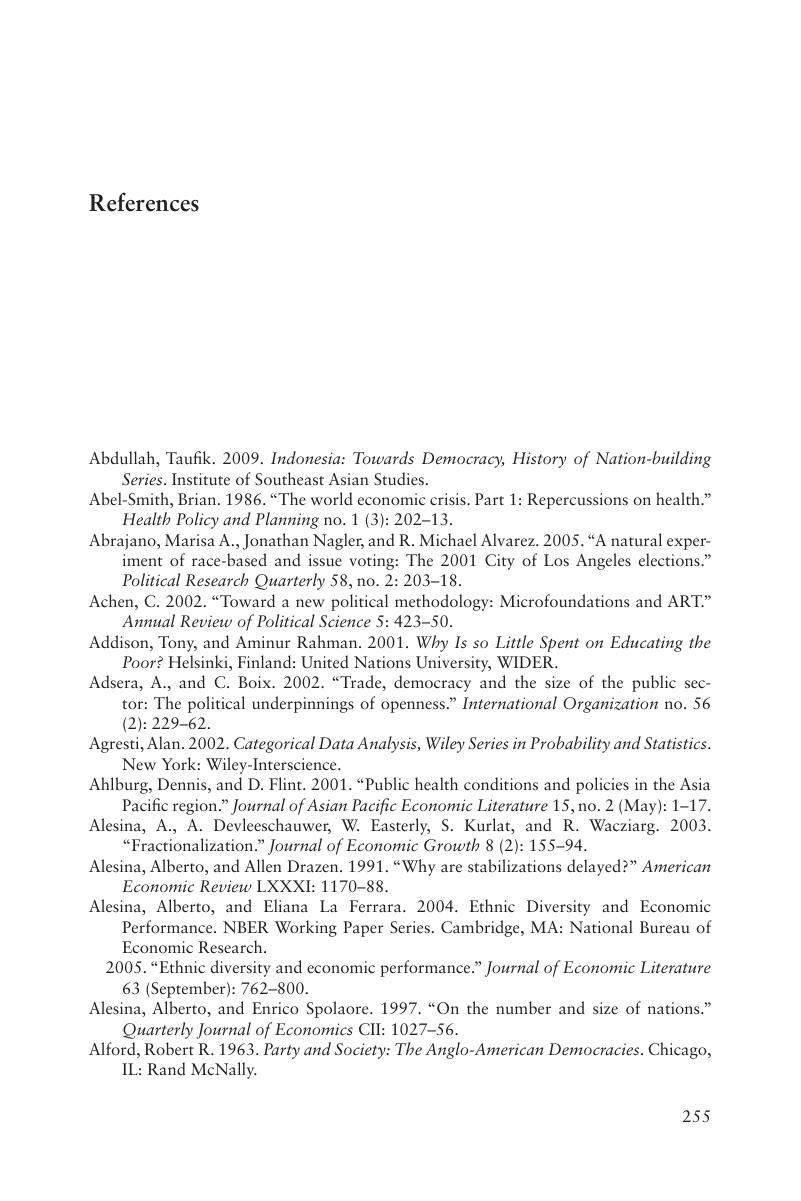 Coalitions of the Well-being
Coalitions of the Well-being Book contents
- Coalitions of the Well-being
- Coalitions of the Well-being
- Copyright page
- Dedication
- Dedication
- Contents
- Tables
- Figures
- Part I Electoral Rules, Ethnicity, and Health in Developing Countries
- Part II Electoral Rules and Health in Low Ethnic-Salience Countries
- Part III Electoral Rules and Health in High Ethnic-Salience, Ethno-Geographically Intermixing Countries
- Part IV Electoral Rules in High Ethnic-Salience, Ethno-geographically Isolated Countries
- Part V Conclusion
- References
- Index
- References
References
Published online by Cambridge University Press: 05 July 2015
- Coalitions of the Well-being
- Coalitions of the Well-being
- Copyright page
- Dedication
- Dedication
- Contents
- Tables
- Figures
- Part I Electoral Rules, Ethnicity, and Health in Developing Countries
- Part II Electoral Rules and Health in Low Ethnic-Salience Countries
- Part III Electoral Rules and Health in High Ethnic-Salience, Ethno-Geographically Intermixing Countries
- Part IV Electoral Rules in High Ethnic-Salience, Ethno-geographically Isolated Countries
- Part V Conclusion
- References
- Index
- References
Summary

- Type
- Chapter
- Information
- Coalitions of the Well-beingHow Electoral Rules and Ethnic Politics Shape Health Policy in Developing Countries, pp. 255 - 280Publisher: Cambridge University PressPrint publication year: 2015


